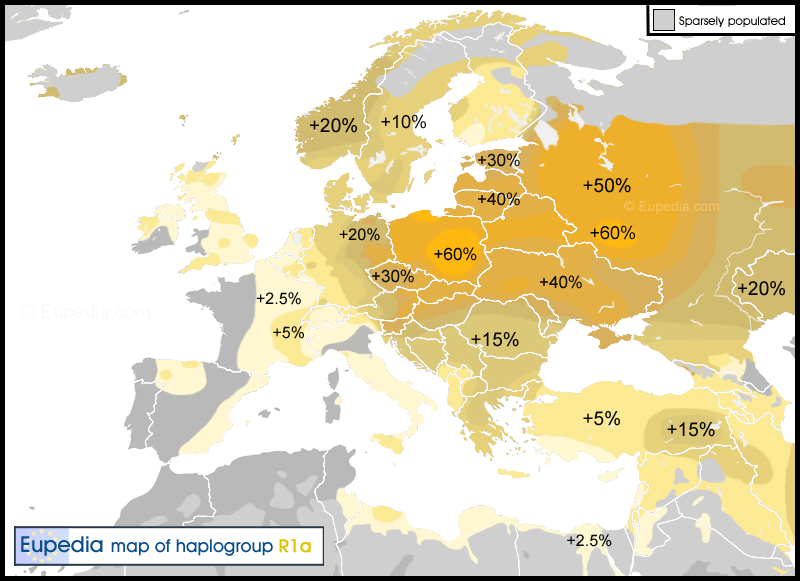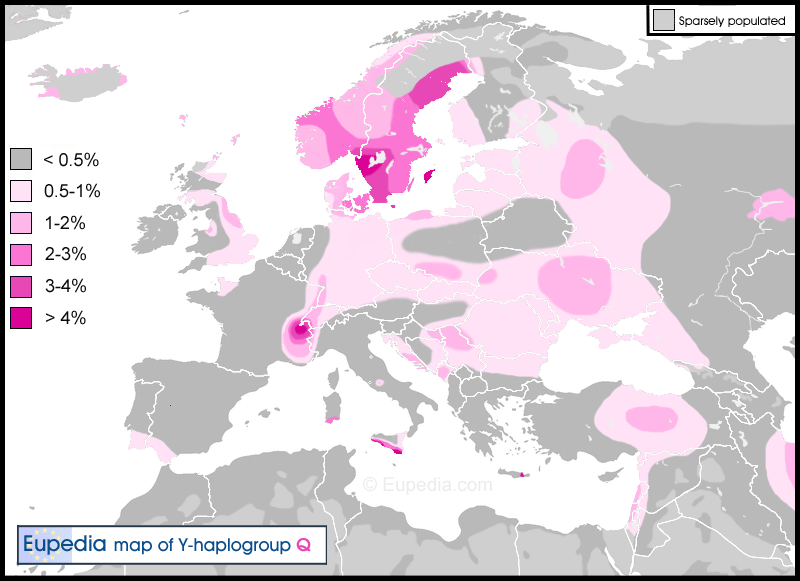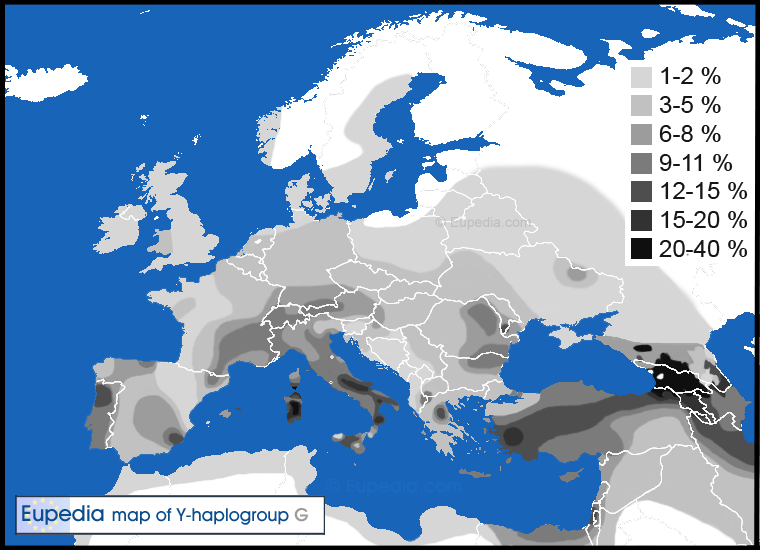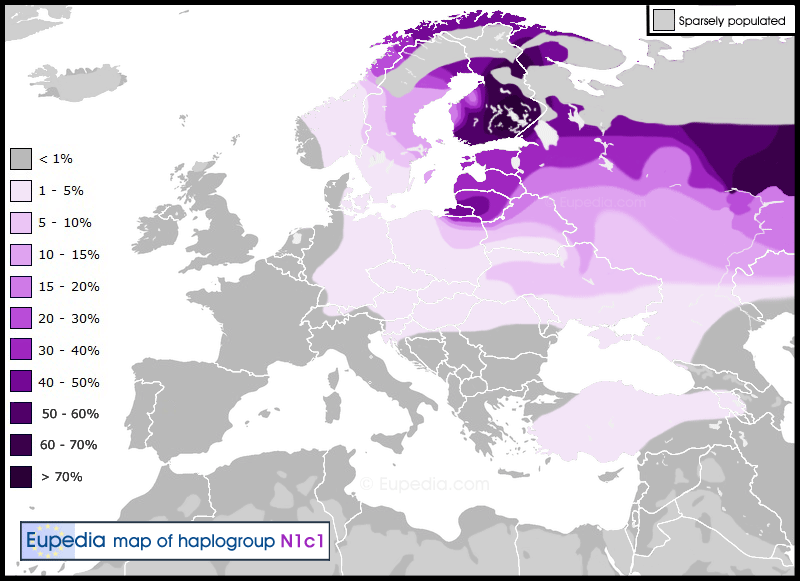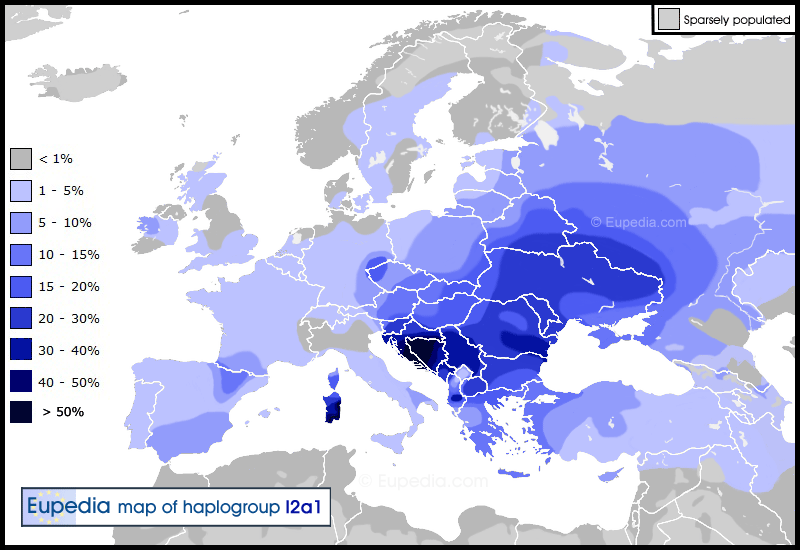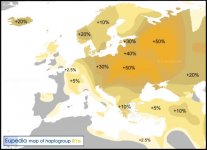There is less STR variation in I1 than in most other haplogroup clades, such as I2. That's a fact. TMRCA calculations are performed based on STR variation, informed by subclade modals. Hence, everyone (Nordtvedt, Robb, Klyosov...) who has looked at current samples of it concludes that it's young in terms of TMRCA.
("my sources are all hobbyists from Rootsweb-DNA") Thats exactly what I thought.
Population STR/Hg diversity (which was your original 'Ken-told-me' Citation) can be irrelevant due to population die off, tribal migrations, and variances that cannot be reproduced without having all the facts. Thus, having a modern diversity of Hg in Denmark within modern Hg results, does not prove or disprove anything, even if it is factual..
It is itself easily skewed by migrational factors, plagues, wars, migrations. The fall back simplistic argument about young age within the entire I1 Hg is also irrelevant since the age timelines anyone is talking about are all beyond the tribal populations that we could in any way recognize. If I1 is 2,500 or 4,000 or 8,000 years old it makes little difference since all are older than the time frames we are discussing. You seem to fall onto this as desperation or to change the initial case you made, yet it is no firmer ground for you.
sparkey said:
Thats an interesting assault on Nordtvedt's character. But attacking him doesn't really invalidate any points that I make. Not to mention that his STR clusters have generally been accurate, and when they haven't been (such as being unable to separate all the "I1-AS" members), it's been due to convergence in young clades like I1, which is unavoidable. That doesn't change the quality of his TMRCA calculations or diversity analysis.
If it seems harsh, then its probably because the saying goes like this - 'the truth hurts'.
If the truth was fun, everyone would tell the truth.
All your nonsense come from a message board cruiser who promises thing he cant possibly know, and tell things that no one can confirm other than his figures that he deduce. This is called deception.
I1 is a element of the Ugric balto-slavs. Ken fabricated promises that all come from his math magic that tell his followers what they want a promise of.
In the real world, his promises cannot be double-blind tested they can only be a article of FAITH.
Science is not the church, not faith. The Germanic populations according to Ken were primarily I1, yet in all the ancient DNA of regions which have major germanic introgression, NO I1.
You change argument like clothing, to avoid this reality. You started this with claims that I1 is always seemingly germanic, using Ken as your arguments shield, and as this crumbled you start retreating and admit that some I1 is Finnic-Ugric.
I1 began as a non-germanic Hg and is not part of the continental germanic tribes until late in the historical period.
sparkey said:
You're wrong. Some clades with no ancient European samples: J2, I2a1*, I2a1b, I2a2a, I2b, I2c, T, Q, L, J1 (unless that "F*" was really J1)...
This is probably the most ridiculous and desperate argument that I may have ever seen.
I said varieties of all European Hg HAVE been found in at least one ancient sample.
You begin to list Semite Y-Hg, ASIAN-MONGOLOID Y-Hg, sub-SNP categories of I2.. which is nonsense. The asian and semite are not indigenous european, and the fact that not every FTdna recognized variant of I2 is in a ancient sample does not change the fact that many ancient Y-dna samples ARE I2.
I1 is a major modern Hg, and is not present in the european Hg on the continent in any ancient samples. Since you cannot affect that you make a nonsense argument to deflect.
sparkey said:
There simply haven't been that many ancient DNA tests yet. Which one do you think should have resulted in I1 if Nordtvedt is right? The Urnfield samples? I wouldn't expect it there. The Corded Ware samples? I wouldn't expect it there. The Treilles samples? I wouldn't expect it there. Avellaner? Ötzi? What? Until you answer that, I'm done arguing with you about the implications of ancient samples.
I would not expect I1 anyplace except in the Central Scandinavian Pennisula, in a ancient sample. Which is why there arent any.
sparkey said:
I'm asking it as a challenge, and you're not answering it satisfactorally. The point is that I1-Z58 is common between North Germans and the English, but much less common in Scandinavia. Meanwhile, I1-L22 is very common in Scandinavia and in some other places we might expect it, like Mann, but it's relatively uncommon in North Germans and the English as a whole. That pattern is consistent with an I1-Z58-heavy population shared between the North Germans and the English, but not the Scandinavians.
You are really in no position to challenge anyone since you already admitted you core hypothesis is wrong and that Finn I1 is not 'germanic'.
You are following a simplistic logic of a linear thinking simple person, and attempting to build a case for a necessity that I1 in England has to come from angles or saxons, despite the fact the Hg is not provably part of the source population.
While there are a dozen ways for your scenario (that I do not lend any agreement is actually correct btw) to be explained, the most logical would be that the population likely to leave central scandinavia and go to Germany as a tribal population, would also be the more adventurous to go on a similar voyage to the british isles as they have already shown a cultural proclivity to wander.
Secondly, there are differential impacts over time that enlarge one population or regional gene pool in a disparate manner to its SNP neighbors over time or conversely deplete it. Conflating the modern Hg/SNP distribution as being symbolic of what existed in that place 1500 years earlier is more often wrong than it is right, and its what got the Ken acolytes spouting the proclamations about I1 being THE germanic Hg in the first place. While modern Hg distro is a really bad indicator of ancient populations,....
leaning on SNP differentials within modern distros is literally insane.
sparkey said:

What do you suppose my desire is? I'm not even I1.
I dont read minds or care. As guess, I think you want to have something to say, are interested in Hg I due to your own results and feel "because Ken said so" is good enough for you.
I do not find Ken to be even remotely credible beyond modern STR counting and tallying of results gleaned from FTDNA tables.
He makes un-serious and nonsensical leaps into pronouncements about ancient or historical genetics that are baseless. Unless you are quoting his STR tallies from databases, or the SNP data that he did not originate but only repeats.. he is in no way a valid or trustworthy source.


